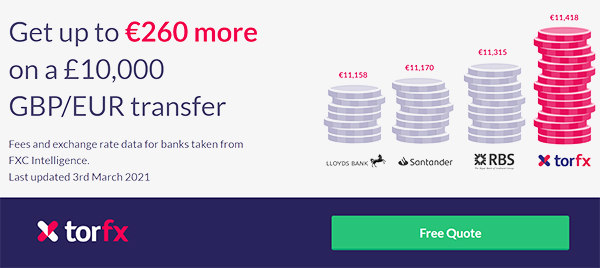Euro to Dollar Forecast: EUR Dips Below 1.17 on USD Rebound
- Written by
Frank Davies

The Euro to Dollar exchange rate (EUR/USD) spiked to a high of 1.1770 in immediate reaction to the US-EU trade deal, but failed to hold the gains and dipped to a low of near 1.1670 after the European open.
European equities hit 4-month highs, but the Euro surrendered gains amid a firm dollar ahead of this week’s Fed policy meeting.
Although there was relief for the EU and global economy, the Euro failed to benefit as higher yields supported the dollar.
ING commented; “With a speculative market already reasonably long euros and a 2% per annum cost of carry against the dollar to deal with, we do not see the case for EUR/USD to immediately push through the highs at 1.1830. Instead, we have a bias for EUR/USD drifting below 1.1700 and perhaps all the way to 1.1600 if the Fed continues to resist pressure to cut rates this Wednesday.”
According to UoB, resistance remains tough to break; “a sustained advance in EUR/USD would require a clear break above 1.1780.”
On Sunday, President Trump and EU Commission President Von der Leyen agreed a framework trade deal between the US and EU.
Under the deal, most EU exports to the US will be subject to a 15% tariff. Steel and aluminium exports, however, will remain subject to a 50% tariff.

The EU has pledged to boost investment into the US and expand energy purchases.
There will be relief that some deal has been agreed given that Trump had threatened 30% tariffs.
According to ING; “An escalation of the US-EU trade tensions would have been a severe risk for the global economy. This risk seems to have been avoided.”
MUFG added; “We do now look to be entering a possible consolidation period for the dollar after a sustained sell-off which is helping push G10 FX vols further lower. With tariff risks receding, market participants’ appetite for carry may well continue.”
The EU position is still worse than before April and details will have to be worked out.
ING still expressed an element of caution; “However, we also know that a trade deal is only done and dusted when everyone has signed it. In the European context, this still means a European Parliament and all national parliaments. More adverse scenarios seem to have been avoided, for now, and this is excellent news but whether everything will now be ‘big and huge’ still remains to be seen. Let's not forget, particularly in trade, only a signed deal is a deal.”
The data boosted risk appetite in early European trading, but the Euto failed to hold gains.

Mizuho Securities chief desk strategist Shoki Omori commented; “The deal's investment provision will draw capital flows out of Europe, strengthening the dollar overall against the euro.”
He added; "Taken together, weaker relative growth prospects and a deteriorating balance of payments argue for a gradual depreciation of EUR/USD once the initial relief fades, notwithstanding the overnight uptick."
Federal Reserve policy will also be important in the week ahead with very strong expectations that interest rates will be held at 4.50%.
MUFG commented; “We expect Chair Powell to continue to signal that they want to assess economic data over the summer to better determine the best path for policy going forward while sticking to plans to resume rate cuts later this year if inflation doesn’t surprise to the upside.”
STORY LINK Euro to Dollar Forecast: EUR Dips Below 1.17 on USD Rebound

The Euro to Dollar exchange rate (EUR/USD) spiked to a high of 1.1770 in immediate reaction to the US-EU trade deal, but failed to hold the gains and dipped to a low of near 1.1670 after the European open.
European equities hit 4-month highs, but the Euro surrendered gains amid a firm dollar ahead of this week’s Fed policy meeting.
Although there was relief for the EU and global economy, the Euro failed to benefit as higher yields supported the dollar.
ING commented; “With a speculative market already reasonably long euros and a 2% per annum cost of carry against the dollar to deal with, we do not see the case for EUR/USD to immediately push through the highs at 1.1830. Instead, we have a bias for EUR/USD drifting below 1.1700 and perhaps all the way to 1.1600 if the Fed continues to resist pressure to cut rates this Wednesday.”
According to UoB, resistance remains tough to break; “a sustained advance in EUR/USD would require a clear break above 1.1780.”
On Sunday, President Trump and EU Commission President Von der Leyen agreed a framework trade deal between the US and EU.
Under the deal, most EU exports to the US will be subject to a 15% tariff. Steel and aluminium exports, however, will remain subject to a 50% tariff.

The EU has pledged to boost investment into the US and expand energy purchases.
There will be relief that some deal has been agreed given that Trump had threatened 30% tariffs.
According to ING; “An escalation of the US-EU trade tensions would have been a severe risk for the global economy. This risk seems to have been avoided.”
MUFG added; “We do now look to be entering a possible consolidation period for the dollar after a sustained sell-off which is helping push G10 FX vols further lower. With tariff risks receding, market participants’ appetite for carry may well continue.”
The EU position is still worse than before April and details will have to be worked out.
ING still expressed an element of caution; “However, we also know that a trade deal is only done and dusted when everyone has signed it. In the European context, this still means a European Parliament and all national parliaments. More adverse scenarios seem to have been avoided, for now, and this is excellent news but whether everything will now be ‘big and huge’ still remains to be seen. Let's not forget, particularly in trade, only a signed deal is a deal.”
The data boosted risk appetite in early European trading, but the Euto failed to hold gains.

Mizuho Securities chief desk strategist Shoki Omori commented; “The deal's investment provision will draw capital flows out of Europe, strengthening the dollar overall against the euro.”
He added; "Taken together, weaker relative growth prospects and a deteriorating balance of payments argue for a gradual depreciation of EUR/USD once the initial relief fades, notwithstanding the overnight uptick."
Federal Reserve policy will also be important in the week ahead with very strong expectations that interest rates will be held at 4.50%.
MUFG commented; “We expect Chair Powell to continue to signal that they want to assess economic data over the summer to better determine the best path for policy going forward while sticking to plans to resume rate cuts later this year if inflation doesn’t surprise to the upside.”
International Money Transfer? Ask our resident FX expert a money transfer question or try John's new, free, no-obligation personal service! ,where he helps every step of the way, ensuring you get the best exchange rates on your currency requirements.
TAGS: Euro Dollar Forecasts
Comments are currrently disabled
Related Stories:
- Euro to Dollar Forecast: EUR Dips Below 1.17 on USD Rebound - July 28, 2025
- Euro to Dollar Exchange Rate Forecast: Trump V Fed - July 28, 2025
- Euro to Dollar Forecast: Range Between "1.1700 Support and 1.1780 Resistance" - July 27, 2025
- Euro to Dollar Forecast: EUR Could Edge Above 1.1795 - July 25, 2025
- Euro to Dollar Forecast: Can EUR/USD Challenge 45-Month Best? - July 24, 2025
- Euro to Dollar Forecast: "The Push Above 1.17 is Important" - July 23, 2025
- Euro to Dollar Forecast: Consolidation Around 1.16 Confirmed - July 22, 2025
- Euro to Dollar Bank Forecast RAISED to 1.23 for Next 12 Months - July 21, 2025
- Euro to Dollar Near-Term Forecast: "Favour a Move to 1.150" - July 20, 2025
Latest News:
- Pound Sterling to Dollar Forecast: GBP/USD Targeted at 1.37 by End of 2025 - July 29, 2025
- Pound to Euro Forecast: 1.1400-1.1495 Likely Range This Week - July 29, 2025
- Euro to Dollar Forecast: EUR Dips Below 1.17 on USD Rebound - July 28, 2025
- GBP/USD Forecast: Pound Sterling Tests One-Week Low on EU-US Trade Deal - July 28, 2025
- Pound-to-Euro Rebounds Amid Doubts over EU-US Trade Deal - July 28, 2025
- Euro to Dollar Exchange Rate Forecast: Trump V Fed - July 28, 2025
- Pound to Dollar Forecast: GBP and USD to Struggle in Months Ahead - July 28, 2025
- Pound-to-Euro Forecast: Retakes 1.15 Today on EUR Correction - July 28, 2025
- Euro to Dollar Forecast: Range Between "1.1700 Support and 1.1780 Resistance" - July 27, 2025
- Pound-to-Dollar Forecast: "GBP Strength was Short-lived" - July 27, 2025








